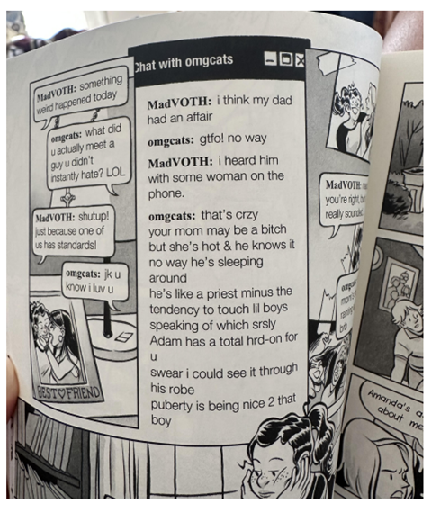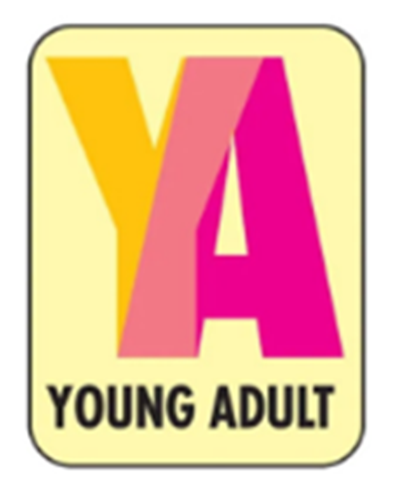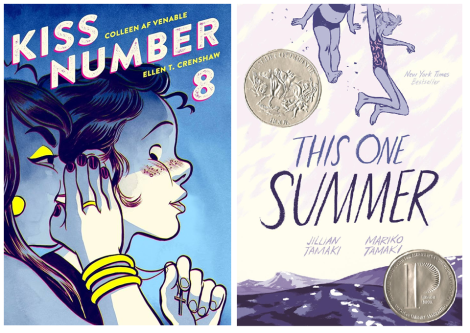How not to ban a graphic (but not sexually graphic) novel
The Washington and Lee Law School’s Journal of Civil Rights and Social Justice hosted its 2025 symposium, “Conflict in the Classroom and Beyond,” last month. When a member of the “Classroom Censorship and Book Bans” panel dropped out, I was asked to step in. I’m no expert, but I was one of several community members who opposed an attempt at our local middle school to ban a set of books from its library. I was asked on a Wednesday to prepare a 15-20 minute presentation for that Friday, which, because it’s me, also meant assembling an improbably fast-paced 35-image slideshow. Turns out the panel was a roundtable of moderated questions with no individual presentations. Since the miscommunication left me with an unpresented presentation, I’ve uploaded the slides here.

The attempted book ban started in September 2023 and concluded in early 2024. It included two graphic novels. One was already on my shelf, and the other I ordered and read.

This may have surprised me more than it should have, but based on what I could glean from public statements, none of the dozens of individuals who spoke in favor of banning had read either of the graphic novels.
I’m guessing Kiss Number 8 was initially targeted because it appears on lists of books banned elsewhere.

It is especially galling that Kiss Number 8 would be targetted as “anti-Christian” since the author intended the opposite:

You don’t have to read the novel to know that.
The protagonist is holding a cross on the cover:

If you read the front flap, you would know it’s about a teen named Mads who “is pretty happy with her life. She goes to church with her family and minor league baseball games with her dad.”
If you read the novel, you would know the church-going is shown early and often, including near the end, when her problems are at their worst. She never stops going to church. Though she’s angry with her mother early on, by the end they have grown close, and they attend church together through every phase. Church is portrayed as an unquestioned positive constant in her life.
But that didn’t stop a local non-reader from writing and distributing a misinformed and misleading three-page letter:

Some highlights:

The novel is over 300 pages. The letter included photos of two:


In the first, one of Mads’ friends, Cat, says she has “the hots for THAT SCULPTURE of Jesus.” Mads responds: “Ewwwwwww.” We are supposed to be grossed-out too. Readers identify with Mads, the narrator, not with Cat, someone just now being introduced. Cat is the most sexualized character, pressuring Mads not to be “prudish” and typing the other bit of dialogue included in the letter. Cat is also the most anti-gay character. When Mads’ bisexuality is revealed, Cat literally vomits, and the two never speak again.
Cat is the villain, a model of how NOT to be. But you would have to read the novel to know that.
Our local Republican party amplified the letter-writer’s call to action, adding more titles to the ban list, including This One Summer by Jullian Tamaki and Mariko Tamaki.

I’ve taught two other Tamaki graphic novels, but not this one.
Again, I assume the book-banners targetted it based on seeing it targetted elsewhere:

I found out about all of this through a local activist organization I helped to co-found back in 2016.

Fighting the ban was a group effort, and having a network in place was key.
My part included: writing emails to the members of the Lexington School Board; writing letters-to-the-editor of the Lexington News-Gazette and Rockbridge Advocate; speaking at three school board meetings; and encouraging others to attend, speak, and write too:

I get absolutely zero credit for the Freedom of Information request that required the school to turn over all documents related to any of the books.

But I did study the documents afterward, including texts between two administrators:

Based on that text, the administrators never read Kiss Number 8 before removing it. This violated established school policy:

There was no committee. There wasn’t even a review. The administrators only read the misinformed and misleading letter of complaint.
They also relied heavily on a misleading phrase:

The term appears in other documents, including a list of supposedly “Sexually Explicit” library books:

And on a document stating that “Sexually Explicit” materials are labeled with YA stickers:

Here’s the logic problem.
While it’s true that “Young Adult” means “mature content,” and while it’s true that anything “sexually explicit” would be “mature content,” it is not true that anything “Young Adult” is therefore “sexually explicit.”
And yet when the administrator was interviewed by local reporters, she called the books “sexually explicit,” which is how the phrase ended up in headlines:

Though the focus was initially on Kiss Number 8, the FOIA request revealed that This One Summer was discussed similarly. An anonymous reader filled out a complaint form:

Since the writer called the material “R-rated,” here’s a quick detour to film rating standards:

Personally, I would say This One Summer is PG and Kiss Number 8 is PG-13. Neither is R because neither is sexually explicit.
Claiming either is sexually explicit also violated school policy:

Though the school policy document did not actually provide a definition, looking up the referenced line of state criminal code produces one:

I think the first and last items on the list are pretty clear, but the middle three need further clarification, which the next referenced line of code provides:

None of that describes Kiss Number 8. Here’s the novel’s most explicitly sexual scene:

And here’s the closest the novel gets to a sex scene:

Turn the page, and the next panel leaps forward in time to the protagonist getting dressed. The sex scene is implicit (it’s clearly implied) and so not sexually explicit. (Not a single person speaking in favor of banning Kiss Number 8 referenced this scene, presumably because they didn’t know it existed.)
I would do the same kind of analysis for This One Summer, but there’s nothing to analyze. No sex acts of any kind, implicit or otherwise, occur during the span of the narrative.
Therefore:

But all of that is just a long preamble required by the misleading use of the phrase “sexually explicit.”
Once the false claim is removed, a core question remains:

In other words, just because something is NOT sexually explicit doesn’t mean that it is approriate for a school library.
However:

What age range does the publisher of This One Summer identify?

There are many highly reputable book reviewers, and Kirkus is high on the list.
What age range do they identify?

Maybe the publisher was trying to widen its consumer base by a year? Whatever the intent, I would default to 13.
The same company published Kiss Number 8:

But in this case, it’s the reviewer that lowers the age by a year:

But whether starting at 12, 13, or 14, the age range suits what the administration identified as appropriate for its middle school library:

Now if only there were some way for a library to separate books written for young teens so that pre-teens wouldn’t be able to access them.
How about a sticker, database, and a form that parents can fill out if they don’t want their children to access those materials regardless of age?

In other words, if you leave the library exactly as it was before the attempted book ban, no problem exists.
Which is roughly what the Lexington City School Board did.
That was early 2024, and though I haven’t looked recently, I believe both graphic novels are currently on the shelves.

Chris Gavaler's Blog
- Chris Gavaler's profile
- 3 followers



